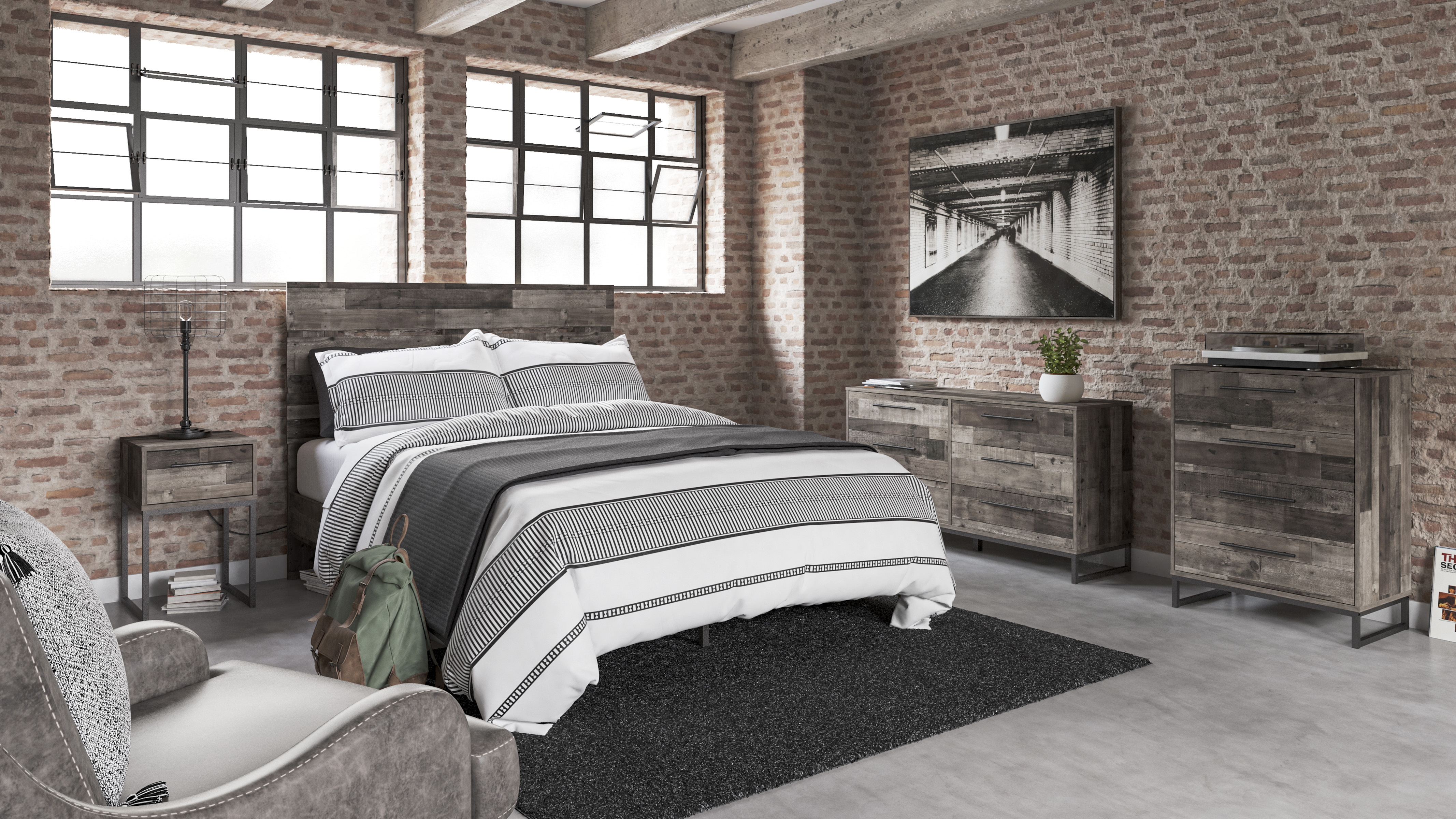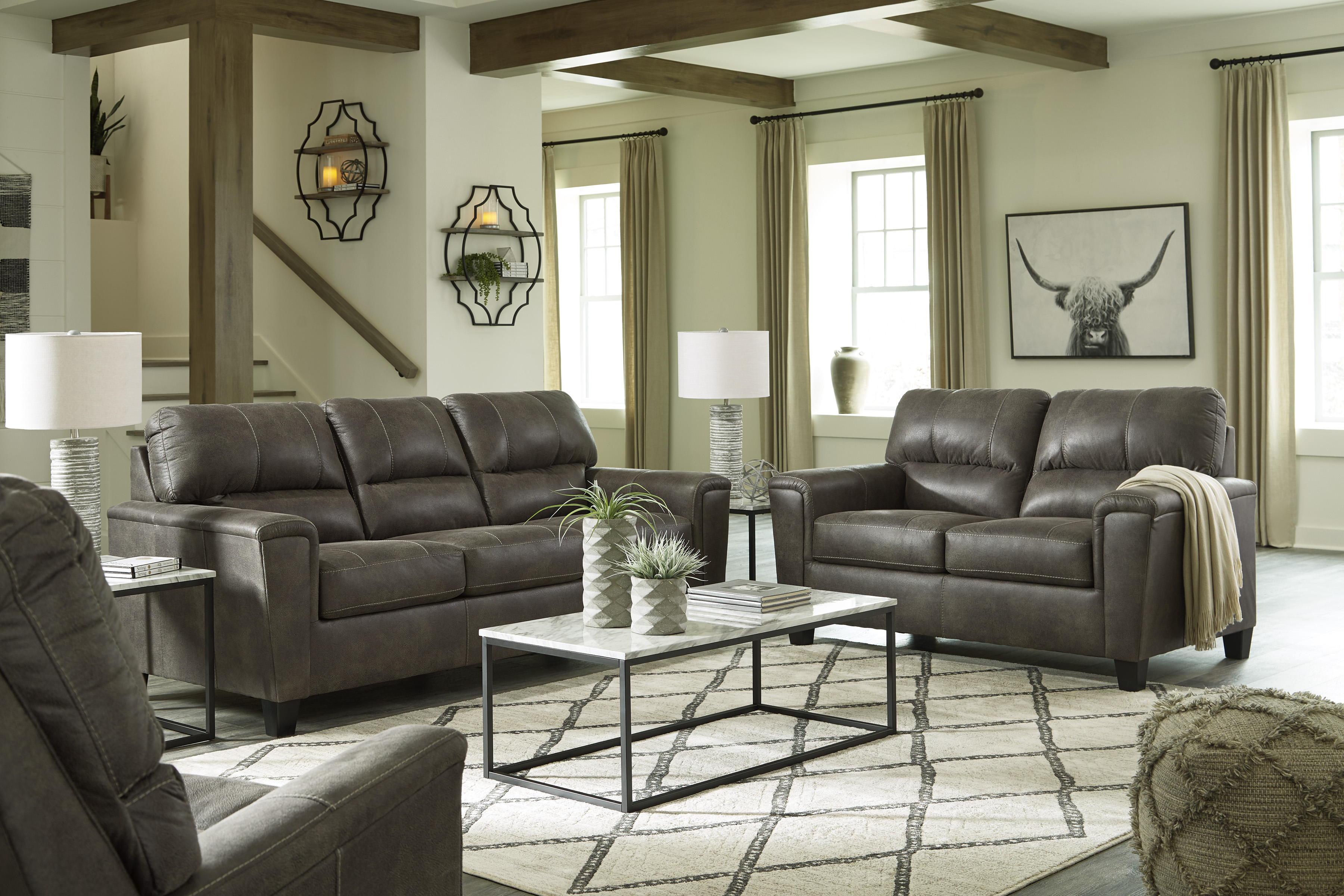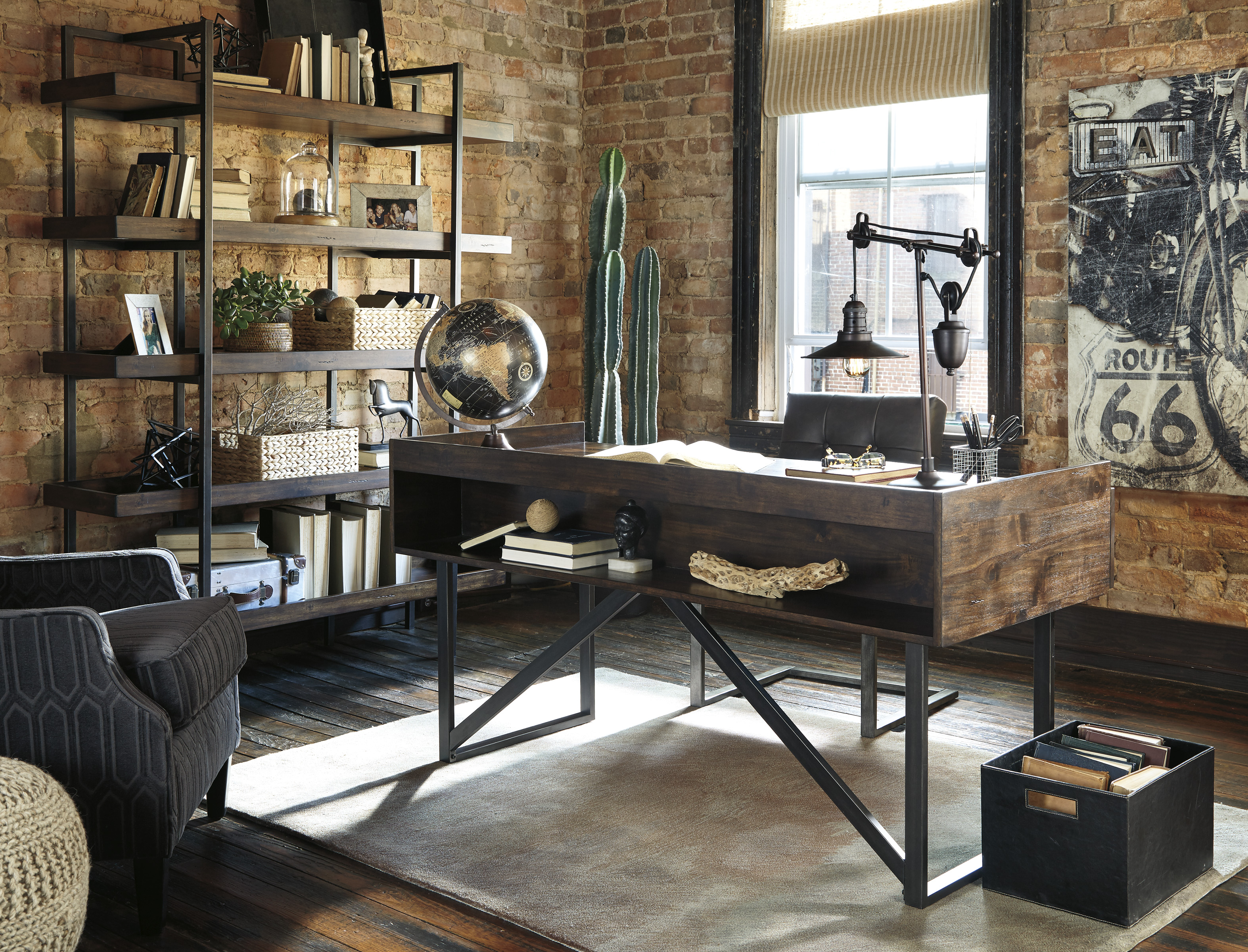If you have ever wanted to create a space that showcases an urban style that embraces the city life aesthetic, having an industrial style might be for you! This interior design style gained popularity around the mid-20th century in America, long after the start of the industrial revolution. During this time, people turned factories and warehouses into housing and retail spaces and the aesthetics of those places were preserved, making the style that we know and love today. Industrial style is perfect for people who love antiques and history, or for those who just want an edgy and sophisticated look. That’s why in this guide we are going to teach you about the most important parts of an industrial home and help you achieve this timeless look.
 (Pictured: Neilsville Queen Size Bed)
(Pictured: Neilsville Queen Size Bed)
1. The Color Palette
The first step before you do anything else is finding out what color palette you want for your home. That might seem intimidating, but if you want that industrial look, the color palette is pretty much already chosen for you. Lean more towards neutral tones like browns and grays and then to add pops of different colors as an accent, add some muted tones like sage green, terracotta or even dusty blue. This allows you to keep a nice, healthy color balance in your home.
2. Materials
After you determine your color palette, you’ll want to start looking for furniture to actually furnish your place. When looking around, think about the different materials that will accentuate the industrial look of your home. Metal and natural materials such as wood are huge staples when creating an industrial design. For upholstery, leather offers a sophisticated and luxurious appeal with rugged charm that will elevate any room to the next level. Once you move on to decorating, don’t forget to add soft textiles like various rugs and throws that are preferably plain with little to no patterns.
 (Pictured: Navi Sofa & Loveseat)
(Pictured: Navi Sofa & Loveseat)
3. Highlight Your Home’s Architecture
The biggest part about creating an industrial design is to focus on the architecture your home has and embrace it. If you have large windows, don’t cover them up! Natural lighting is one of the many key elements that many industrial homes have. You’ll also want to keep around any exposed brick and visible ductwork since it adds to the vintage commercial vibe that you want to go for. Opt for open floor plans and either concrete or wooden flooring to really enhance your industrial home.
4. Add Plants
While plants themselves are not a key element when it comes to industrial interior design, they are a rather well-known way of breathing life into a space. Especially since the main color palette features neutral tones, adding a touch of green with leafy plants will help balance and keep your home from feeling boring or dull. Houseplants are also a great way to add visual contrast from the clean-lined designs with their organic shape.
 (Pictured: Starmore Desk & Desk Chair)
(Pictured: Starmore Desk & Desk Chair)
5. Mix the Old and the New
Upcycling pieces of old furniture and reclaimed furniture are some more key elements when it comes to achieving an industrial look. The vintage aesthetic of old furniture will amplify the antique and historical look you are going for. Adding modern pieces and decor to mix with the vintage furniture will make sure your design is both on-trend and timeless, making sure you love this look for years to come.
6. Multifunctional Spaces
Maximizing your space to the full potential by creating multifunctional rooms is essential since one of the key parts of industrial style is function and minimalism. Creating a home office area in your bedroom is a good way to incorporate multifunctional spaces. Just place your desk and desk chair in one of the corners of your bedroom and make that your office space. You could also buy furniture that has multiple purposes, like lift-top coffee tables or sleeper sofas to boost functionality. Doing all of this will create a sleek, uncluttered look that adds to the industrial vibe.
 (Pictured: Torjin Counter Height Dining Table & 3 Stools)
(Pictured: Torjin Counter Height Dining Table & 3 Stools)
Industrial style has been a staple in interior design for many years, but recreating that look in your own space can seem complicated, especially if you don’t live in a loft apartment in New York or London. That’s why we hope that this guide was able to help you learn how to make any space in your home have that industrial charm you know and love. To start your shopping journey for industrial furniture and decor, you can view our wide selection online here! You could also visit our superstore and see what we have in person and maybe gain some inspiration at 4200 W. Kellogg Dr.






